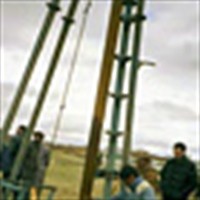
Getting the agricultural system back on its feet
Challenge
Agriculture is a way of life for 70 percent of Afghanistan's people and traditionally the largest and most important sector of the Afghan economy. But instability, coupled with the region's four-year drought, has devastated the country's food production capacity and impoverished farmers. Farmers and small business owners became deeply indebted during years of drought and instability, driving them to cultivate poppy for drug trafficking and force their young daughters into marriage.
Initiative
USAID is helping farmers re-establish production and become more profitable and efficient by rehabilitating the irrigation system and providing tools, agricultural equipment, fertilizer, and seed for spring planting. These combined efforts could yield 125,000 metric tons of food. Over the next two years, USAID will provide 48,000 metric tons of wheat seed, enough to rejuvenate Afghanistan’s supply and possibly double wheat production. Lack of water is the most critical constraint to reviving Afghanistan's agriculture, so USAID is funding the drilling of wells, the reconstruction of local irrigation systems, the rehabilitation of the water supply, and water conservation projects. USAID also will fund a nationwide water-resource assessment to better understand and respond to the effects of four years of drought.
Results
USAID is revitalizing the rural economy by promoting the cultivation of high-value crops, such as raisins, other fruits, and vegetables. Cash-for-work projects employ residents to rehabilitate critical infrastructure such as farm-to-market roads and irrigation systems. In Helmand Province, for example, farmers who formerly grew opium poppy have responded favorably as USAID helped them re-enter legitimate export markets lost during the conflict, including cotton, peanut, and vegetable seed.







Comment
Make a general inquiry or suggest an improvement.